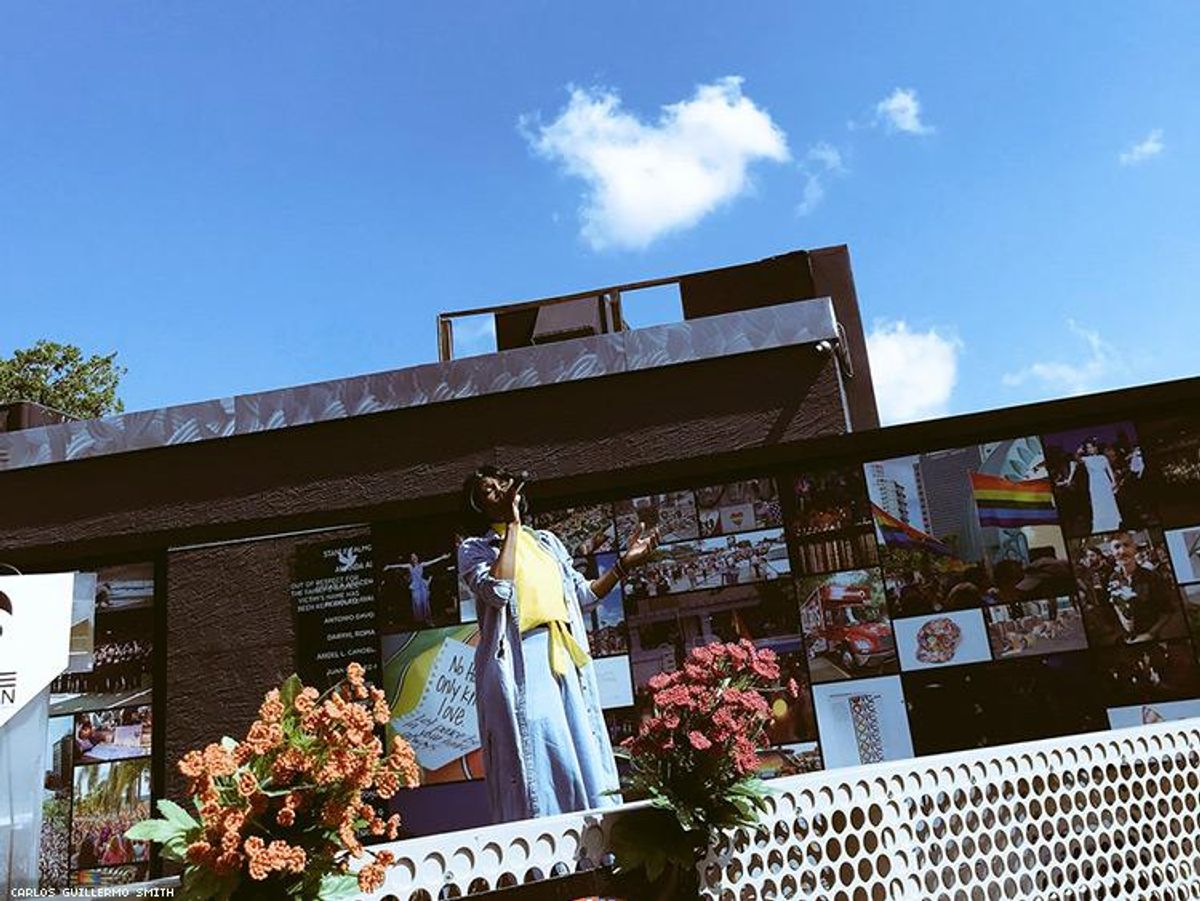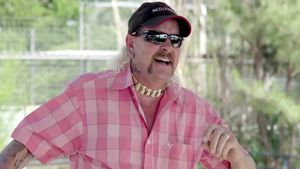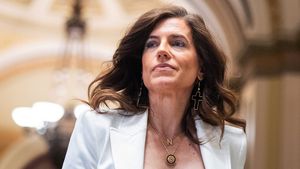As a dedication of a new memorial to the Pulse attack came to its close, people in attendance swore they saw clouds form in the shape of a heart. "I know that our angels are happy," said Mayra Alvear, whose daughter Amanda died in the 2016 Orlando gay nightclub shooting, America's second-deadliest.
Pulse, where a shooter killed 49 people and injured 53 others, has been behind fencing and barriers since the events of June 12, 2016. For much of that time, a gathering of flowers, photos, and messages signed on tarp served as a makeshift memorial to those lost, but the onePULSE Foundation Tuesday officially unveiled a new memorial, and in the afternoon took fencing around the club down for the first time.

The new memorial consists primarily of a collage of photographs of vigils, Pride events, and tributes. The images, alongside such documents as a letter of support from Canadian Prime Minister Justin Trudeau, were mounted to a curving wall structure that surrounds three sides of the club. The now-iconic Pulse sign remains in front of the club on Orange Avenue, its base now adorned with reflective panels where individuals can leave messages of support in dry-erase marker.
One thing missing? Images of the terrifying crime scene. Foundation leaders say that's reflective of community desires. "This has been a sad place for a while," said Earl Crittenden, chairman of the onePULSE Foundation Board of Trustees. "All the images are not only the story, but reflect how people here live for the future."

Barbara Poma (pictured), owner of Pulse and now CEO and executive director of the foundation, says a community survey dictated the memorial should celebrate strength, courage, peace, and community, along with other positive emotions. She's toured the country looking at other memorials to tragedies such as the 9/11 memorial in New York City, and she knows the community needs to lead the direction of this place.
This memorial will stand only for a limited period, until final plans for a permanent museum come together. But Poma said planning for that will likely take years. Critical decisions, such as whether the original Pulse structure should stand or be replaced, remain undecided. And dialogue also remains to be had about how much the museum should explore controversy about the crime, such as whether it was motivated by hate for LGBT people or an act of random terrorism. "That's not my decision. It's about the community. We leave that to them," she said.

The new memorial means fences surrounding the property got taken down Tuesday and the public could walk the Pulse property for the first time since before the shooting; the building itself remains off limits. The photo wall also includes some clear panels where visitors can get their first unobstructed view of Pulse for the first time in nearly two years. Through one panel, you can see the names of most of the 49 killed in the tragedy (one name was left out and replaced with the silhouette of a dove at the request of family). Another panel opens to an iconic part of the Orlando bar, an outdoor waterfall which the foundation plans to get up and running again in the near future. And on the back side of the club, two panels also expose the bathroom walls where law enforcement breached the club in the early hours on June 12 to bring the long and deadly standoff to a close.
Metal fencing in front of a podium stands in front of the picture wall, and some families have hung pictures of lost loved ones on this smaller monument, but the main wall opts to show pictures of healing rather than just showing the lost.

Alvear, for her part, would like to see the stories of the fallen 49 told when a permanent museum opens. "We hope people come to know not only their names but to know their stories," she said, "that they were loved by families, and are missed by families. People will learn they had dreams, and that we had dreams for them and love for them."
Signs of a makeshift memorial that arose after the shooting closed down the club have since been packed away and turned over to historians. Ericka Dunlap, a former Miss America who credits her pageant success partly to tutelage from female impersonator Carmella Marcella Garcia inside the halls of Pulse, says the new memorial honors the memory of the club and those lost. Still, she misses the haphazard shrine that once stood. "The other memorial was more of a true community relationship," she said. "This is more of a formal interpretation, but I am glad we had two years to honor people with their own personal touch."
Ben Johansen, who founded the Orlando Ribbon Project and has given out 600,000 ribbons through the effort, appreciated seeing images of that endeavor and other community response portrayed on the wall. "This is created such a beautiful, lasting memory," he said. And every expression of grief or support ever made for Pulse victims, he said, should be treasured.
The new memorial, which includes round benches marked with the word love where people can sit and reflect, will likely become a fixture in the life of Jhamil Hinds, who lost 12 friends in the Pulse community. "I will stop and stay for 30 minutes or an hour, just thinking of all my friends," he said. "I was thinking after two years it's going to be more easy. It's not. I feel the same thing. Nothing has changed. I didn't get to say goodbye."
It's all part of the entire Orlando community healing together, Poma said. But there's one thing she feels no memorial will ever provide. "I don't think 'closure' is an appropriate word," Poma said. "I don't think we ever close out of this. I don't think we ever come to peace with this. It becomes part of our threads of who we are. We learn to live with it. We learn to move through it. But we certainly don't get closure."
























































































